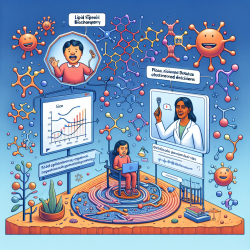Introduction
In the face of the COVID-19 pandemic, many educational programs were forced to pivot to online platforms. One such adaptation was the "Training the Eye: Improving the Art of Physical Diagnosis" course at Harvard Medical School, which traditionally used art to enhance medical students' observational skills. This shift offers valuable insights for speech-language pathologists and other practitioners seeking to enhance their skills through virtual learning.
Understanding the Virtual Transition
The transition to a virtual format for the "Training the Eye" course involved several strategic adaptations. The course, which emphasizes visual observation skills through art analysis, was conducted over Zoom. This allowed students to access a wider range of artworks from around the world, enhancing the diversity of their learning experience.
Key advantages of this virtual approach included:
- Increased accessibility for participants regardless of location.
- Utilization of virtual tools for enhanced art viewing.
- Time efficiency and convenience.
- A private, safe space for learning.
However, the lack of in-person interaction and the inability to fully replicate the gallery experience were noted as drawbacks. This suggests that while virtual learning can be effective, it may benefit from a hybrid model that combines online and in-person elements.
Applying Insights to Speech-Language Pathology
For practitioners in speech-language pathology, the lessons from this course can be applied to enhance professional development and client outcomes. Here are a few ways to implement these insights:
- Embrace Virtual Tools: Utilize virtual platforms to access diverse resources and tools that can enhance your practice. This can include online workshops, webinars, and virtual conferences.
- Foster a Hybrid Approach: Consider combining virtual learning with in-person sessions to maximize the benefits of both formats. This can help maintain the personal connection that is often lost in purely online interactions.
- Engage in Visual Thinking Strategies (VTS): Incorporate VTS into your practice to improve observation and critical thinking skills. This can be particularly beneficial in assessing and diagnosing communication disorders.
- Enhance Telepractice Skills: Use the insights from virtual learning to improve telepractice sessions. This includes developing techniques for engaging clients remotely and ensuring effective communication.
Encouraging Further Research
The adaptation of the "Training the Eye" course highlights the potential for virtual learning to enhance professional skills. However, further research is needed to explore the long-term impacts of these adaptations and to identify best practices for virtual education in speech-language pathology.
Practitioners are encouraged to engage with the original research and consider how these findings can be applied to their own practice. By doing so, they can contribute to the ongoing development of effective virtual learning strategies.
Conclusion
The transition to virtual learning presents both challenges and opportunities for practitioners. By leveraging the insights from the "Training the Eye" course, speech-language pathologists can enhance their skills and improve outcomes for their clients. As the field continues to evolve, embracing innovative approaches to learning will be crucial for success.
To read the original research paper, please follow this link: Training the eye, virtually: adapting an art in medicine curriculum for on-line learning.










